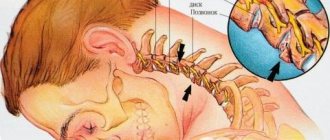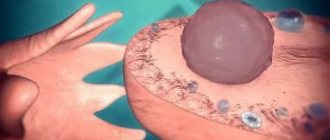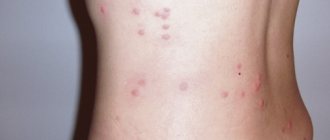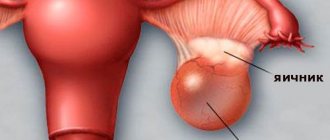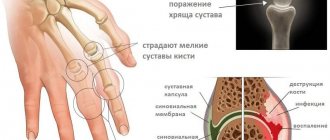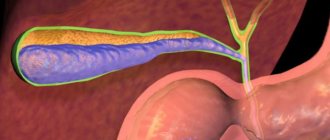What is atheroma
As a result of blockage of the external opening of the excretory duct of the sebaceous gland, difficulties begin with the outflow of secretions. Atheroma is a cavity formed due to the accumulation of a pasty secretion in the duct, with a sebaceous composition (fat drops, detritus, keratinized cells). The secretion has an unpleasant odor, and visually the cyst resembles a ball. Similar in size to a chicken egg. There is also scrotal atheroma and retention cyst. A soft growth occurs at any time and in the area where items of clothing come into contact with the skin. Wen is localized in the following places on the body:
- back;
- delicate facial skin;
- armpits;
- scalp;
- behind the ear;
- mammary glands;
- genital folds;
- buttocks;
- shoulders;
- chin;
- fingers;
- neck;
- shins.
Causes of atheromas
There is a whole set of predisposing factors for the formation of atheroma. It begins to form after blockage of the ducts of the apocrine glands. This phenomenon can be caused by:
- metabolic disorder,
- inflammation of the hair follicle and inflammation of the epidermis, which developed as a result of mechanical trauma,
- improper use of cosmetics intended for body care,
- excessive sweating,
- hormonal imbalances,
- genetic diseases,
- skin injuries when squeezing out acne,
- contamination of the skin with bacterial or fungal microflora.
When the sebaceous ducts become blocked, the apocrine glands themselves continue to produce secretions. As a result, a compaction is first formed, inside which the epidermal cells remain viable. They continue to produce keratin. With its help, a cyst capsule is formed.
Causes of atheroma
Blockage of the sebaceous gland occurs when the obstruction of the ducts or swelling of the hair follicle (follicle), but what causes this phenomenon? There is no single reason. After trauma or due to increased testosterone levels, the outlet is blocked. Sebaceous secretions continue to accumulate, and the follicle becomes large and becomes atheroma.
- Hygroma on the finger - causes, symptoms, diagnosis, treatment and removal methods
- Wen on the back - causes, symptoms, diagnosis, how to treat and removal methods
- Wen on the arm - what it looks like, causes, treatment with folk remedies and removal
Damage or rupture of the sebaceous glands may also be the cause. Due to the formation of a carbuncle or boil, the gland penetrates the skin, and the secretion continues to be produced. Purulent atheromas or acne may occur after blockage of the mouths of the hair follicles. Other causes of atheroma:
- hereditary factor;
- hormonal changes;
- poor environmental conditions;
- modern pace of life;
- hard work;
- impaired metabolism;
- seborrhea.
Types and causes of formations
Atheroma is a benign formation that develops as a result of blockage of the sebaceous glands. Due to the blockage of the ducts, sebum is not secreted, but is produced further and accumulates in the subcutaneous layer, forming a capsule around it.
There are two types of atheromas:
- Genetic. They develop during the intrauterine formation and maturation of the epidermis (the disease is hereditary).
- Untrue. Formed when the sebaceous gland is clogged throughout a person’s life, they represent a sac containing atheromatous masses.
The reason lies in the accelerated release of testosterones.
Atheroma in the back area is not true; it can appear in a person of any gender and age category, but more often men after 30 years suffer from this disease. The reason lies in the accelerated release of testosterones.
There are many factors that can provoke the development of a cyst under the skin. These include:
- Disturbed metabolic processes. Against the background of some pathologies, a change occurs in the nature of the secretion from the sebaceous glands, which causes the ducts to become clogged.
- Increased sweat production. This phenomenon is often observed when there is a hormonal imbalance. A person becomes prone to pimples, acne, and furunculosis.
- Skin injuries.
Treatment of atheroma at home
Judging by the reviews of real people, it is dangerous to prescribe treatment for atheroma at home on your own. Without surgical intervention, it is possible to eliminate swelling only at the initial stage. Therapy may be with the addition of folk remedies, or it may consist of the use of special ointments suitable for each specific case. How to treat atheroma at home? The following ointments can be used strictly under the supervision of a specialist:
- To speed up the removal of purulent masses, take ointments with antibiotics that have an anti-inflammatory effect: Levosin, Oflokain, Levomekol. They are prescribed to relieve inflammation, tissue swelling, pain, and also after opening to prevent infection.
- Dermatoprotectors will help strengthen skin tissue, accelerate cell metabolic processes and change the epithelial layer. Prescribed Adolen gel, Effezel gel, Differin. With the help of such ointments, the risk of replacing atheroma with connective tissue and its growth is eliminated.
- Absorbable ointments are aimed at removing the postoperative scar and improving the blood supply to cells: Lyoton, Troxevasin, Heparin, Contratubes.
Treatment of atheroma at home with ichthyol ointment
After consultation on what constitutes atheroma - which can be treated at home - the doctor may prescribe additional medications for you. Treatment of atheroma without surgery is performed with ichthyol ointment. The product is effective at the first symptoms of a wen: the skin turns red, irritation and discomfort are noted. How to treat atheroma at home with ichthyol ointment:
- The product is used as a compress. To do this, take gauze bandages and soak them with the drug.
- It is necessary to change compresses for new ones 3 times a day. To prevent them from flying off, they are fixed with adhesive plasters.
- Treatment should be carried out until complete recovery - restoration of the skin area.
- Wen on the face
- New growths on the skin - types, diagnosis and removal
- How to squeeze out a wen on the face or body - how to get rid of it at home
Treatment of atheroma with Vishnevsky ointment
An excellent drug has a wide range of applications. Treatment of atheroma with Vishnevsky ointment should be carried out after a small allergy test. You can determine sensitivity to the components of the ointment by applying a small amount of the product to the area. If there is no negative reaction, then the ointment can be used only after opening the formation. If you apply the product before, then the pus will penetrate into the subcutaneous tissue. Bandages with ointment are applied for no more than 7 days, and changed after 12 hours. Contraindication: absence of obvious inflammation.
Risks of relapse and care after treatment
Purulent atheroma complicates actions to remove it and also increases the risk of relapse. The highest quality operation will not be a guarantee against its recurrence if the preventive measures established in such cases are neglected, namely:
- cleanse the skin exclusively with special products recommended by a dermatologist;
- use shampoos that have a drying effect;
- strictly monitor personal hygiene;
- thoroughly remove makeup from the skin and avoid decorative cosmetics several times a week;
- adhere to a healthy lifestyle;
- minimize the consumption of fatty, salty and fried foods"
- protect skin from negative environmental influences.
If the treatment of ordinary atheroma comes down to a simple operation that lasts no more than 30 minutes and practically does not require further measures, then the treatment of a purulent form of an epidermal cyst takes a longer period. The formation itself does not resolve, and the only way to remove it is surgery.
With a professional approach and implementation of all necessary measures, the operation to remove purulent atheroma takes place without consequences. At the same time, the risk of relapse and complications is guaranteed to be eliminated. Therefore, if a suspicious growth is detected on the skin, you should not postpone a visit to the doctor.
Removing atheroma at home
The only way to get rid of the formation is surgically using a scalpel, radio wave or laser therapy. Removing atheroma at home is a dangerous procedure, judging by the reviews. How to get rid of atheroma? In the hospital, under local anesthesia, the doctor removes the contents and the cyst itself (capsule). The procedure does not exceed 40 minutes. Your doctor will tell you the correct methods of care after surgery at home:
- If the cyst is suppurated and inflamed, you should not smear the area with your own chosen products, as this can cause an abscess under the skin or phlegmon. The accelerated breakthrough of the abscess drives the infection deeper (inside).
- After removing the atheroma, the doctor explains how important it is to care for the remaining scar. To do this, external agents with a resolving effect are applied to the skin.
- When opening a purulent formation, it is necessary to use compresses with antiseptics and drugs with regenerating properties. After the symptoms subside (after a month), the atheroma is removed to avoid relapse.
Symptoms
An epidermal cyst on the back can be recognized by the following signs:
- a lump-like compaction on the back between the shoulder blades, along the spinal column or in the lumbar region;
- the skin over the tumor is not damaged, its shade does not differ from the surrounding skin (unless the cyst is inflamed);
- the formation can be the size of a “pea”, and sometimes grows to the size of a “chicken egg”;
- atheroma is characterized by an increase in volume;
- the formation has a round shape, soft to the touch, inactive;
Round shape, soft to the touch, inactive.
- no pain occurs during palpation examination;
- there is no itching or other similar signs;
- in the center of the formation there is a black dot - this is a blocked duct;
- in some cases, spontaneous opening of the cyst, suppuration, and removal of the contents is observed;
- the accumulated exudate during compression of the tumor can be released in the form of a white cheesy mass with a characteristic aroma;
- when the atheroma becomes inflamed and suppurates, the secretion becomes yellowish or brown with bloody inclusions;
- an opened cyst can fester and transform into an ulcer.
Treatment of atheroma with folk remedies
A quick way to eliminate such a disease as atheroma is treatment at home without medications. It must consist of a special action: you need to free the cyst from its contents. Herbal remedies are used in a variety of forms: masks, ointments, tinctures. If you take an unconventional approach, you should consult your doctor. Treatment of atheroma with folk remedies can be carried out using the following effective recipes:
- Rubbing with plant juice: rinse aloe, dry 2 large leaves. Grate to a paste consistency. Pass the mixture through cheesecloth. Wipe the formation with juice up to 6 times. Every day you need to take fresh juice.
- Lamb fat product. Render the fat and cool it. Pour into a cream bottle or other container and rub into the area 5 times a day. Add vegetable oil and garlic juice to the mixture.
- Using a meat grinder or blender, grind the burdock root. Mix everything with butter or pork fat. Keep the product in the dark for 3 days. Lubricate periodically until symptoms disappear.
- You will need to separate the egg film from the shell and apply it for 2 hours. It is possible that swelling or redness will appear around the wen. After 3 sessions the contents will come out.
- A decoction of coltsfoot leaves is prepared at home like this: boil 3 leaves in water and drink 100 ml every day.
Treatment at home using lotions
When performing healing therapy to eliminate atheroma, be careful: herbal preparations often cause allergic reactions. They can manifest as rashes and itchy spots on the skin. Treatment at home using lotions is carried out in combination with basic medications. The exposure time of lotions varies, ranging from 40 minutes to 1 hour. To speed up the effect, it is recommended to carry out the procedure 3 times a day. The most effective lotions are:
- Ammonia: take 2 tablespoons, mix with water in equal proportions. Pour the product onto a clean bandage or cotton wool and apply to the atheroma. After the procedure, rinse with warm water and repeat every day.
- Dig up a peony from your summer cottage, take the roots, and chop finely. Take them 2 tbsp. l., add water (two and a half glasses) and boil. Strain the product through cheesecloth, cool and wipe the necessary areas with the broth.
- Bake the onion. Grind the laundry soap using a grater. Mix all ingredients thoroughly and apply to the atheroma along with the bandage. Change the resulting mask 2 times.
Why does atheroma suppurate occur?
Atheroma does not always become inflamed and begin to fester. In most cases, the wen does not cause concern and only brings significant cosmetic discomfort. Danger may arise if the formation is injured and infected with bacteria. In this case, inflammation develops inside the cyst. If left untreated, it gives rise to the development of purulent reactions. The abscess causes the development of an abscess. Failure to comply with personal hygiene rules and self-medication using folk recipes can provoke suppuration. It is imperative to get rid of inflamed atheroma as soon as possible.
Which doctor should I contact?
To diagnose the disease, you need to contact a dermatologist. Upon external examination, he is able to differentiate atheroma from lipoma, fibroma and dermoid. If the diagnosis is confirmed, the dermatologist will redirect the patient to a surgeon. He will assess the affected area, select the appropriate method and open the cyst using a scalpel, radio knife or laser. You should seek help from a doctor when the first signs of an inflammatory process appear.
Diagnostics
If compaction occurs, you must consult a surgeon; often diagnosing atheroma is not difficult. The doctor conducts an examination, examines the lump visually and by palpation. Examines the color, mobility, size, density, contours, pain and location of the tumor. In some cases, ultrasound, histological analysis, and biopsy are required to clarify the diagnosis. You may need to be examined by other specialists, namely a dermatologist or oncologist.
Diagnosis of the disease
The goal of an accurate diagnosis is to exclude the presence of a malignant neoplasm. For this, the attending physician prescribes histological and morphological studies. Based on the results, an accurate diagnosis is made.
In addition, the surgeon can determine atheroma by external signs during a direct examination of the patient:
- a black dot (a pore clogged with fat secretion) on the surface of the atheroma;
- no pain during palpation;
- the presence of clear edges.
There are frequent cases of multiple appearances of atheromas; this process is called atheromatosis and requires complex treatment.
Lipoma
This is a benign formation consisting of adipose tissue. In essence, it is a local accumulation of adipose tissue under the skin. Lipoma is a benign tumor, although in rare cases liposarcoma, a malignant formation, can develop under its mask.
Lipomas manifest themselves in the form of soft-elastic subcutaneous formations, mobile, painless, and can slowly increase in size. The skin over lipomas is not changed and easily moves over them. Small lipomas are not visible at all; they can only be detected by palpation. Larger lipomas stand out as “bumps” of round or oval shape. The size of lipomas is very variable - from 1-2 cm to 20 cm or more. Lipomas never become inflamed or suppurate.
Treatment with traditional medicine
Immediately after diagnosing atheroma, doctors recommend removing the cyst, because all other means can only help relieve inflammation, but the capsule will remain in place and will continue to progress.
The surgery is usually performed in an inpatient setting at a clinic and is performed by the surgeon on duty. Hospitalization may be required only if suppuration occurs and there is a possible risk of capsule rupture and infection spreading throughout the body.
Operation
There are two ways to perform the operation, which differ in the way the capsule is removed:
1 way
- First, the patient is given local anesthesia;
- Then the surgeon makes an incision and punctures the capsule, the released pus is squeezed out with fingers and collected with sterile napkins;
- At the next stage, the capsule is removed using special forceps;
- If during the operation an incision more than 2.5 centimeters long is formed, sutures are placed on it; such manipulation is necessary for faster healing and achieving the best cosmetic effect.
Method 2
The main difference is that after the cut, the integrity of the capsule is not compromised. The surgeon gently presses the edges of the wound with his fingers and removes the ball, or pulls it out using special forceps.
Treatment of atheroma on the earlobe, head and face
Treatment of atheroma on the earlobe, head and face differs in that in such cases doctors recommend removing the cyst as soon as possible. This is due to the fact that it is in these areas that the risk of inflammation and suppuration increases; self-medication can lead to the spread of infection.
How to get rid of atheroma without surgery?
To completely remove the wen, it is necessary to remove not only the internal pus, but also the capsule.
Until recently, it was believed that this effect could only be achieved through surgery.
But medicine does not stand still, and now everyone can choose a non-surgical method of treating atheroma.
Radio wave removal
During such an operation, a specialist acts on the skin with high-frequency radiation. Initially, the walls of the epidermis move apart, after which the frequency increases and the capsule is completely removed. After this procedure, a small crust remains, which disappears on its own after a few days. Typically, the cost of this operation starts from 2 thousand rubles.
Laser removal
According to the principle of this procedure, this procedure is similar to the radio wave method, only here the effect on the atheroma is carried out by a laser beam. Laser fat removal does not leave behind scars or other side effects. Most often, this procedure is resorted to when tumors appear on the face and other visible places. Also, its cost is significantly higher than the previous method and starts from 5 thousand rubles.
It is worth remembering that only small wen can be gotten rid of without leaving a trace. Therefore, under no circumstances should you delay treatment of the disease.
Treatment of suppurating atheroma
In the case when the disease is very advanced, the atheroma begins to fester. This process causes adverse consequences, due to which pus can spread through the soft tissues and then into the internal organs.
To get rid of such a wen, you will have to resort to an operation that is carried out in 2 stages.
Stage 1
- First, the surgeon makes an incision on the atheroma and removes all pus and other contents;
- Then the wound is washed with an antiseptic and a special tube is inserted into it, which will constantly irrigate the wound, washing away the remnants of atheroma;
- Then the wound is lubricated with antibacterial ointment and a temporary bandage is applied.
This operation is necessary in order to relieve inflammation and get rid of the risk of spreading the disease. If necessary, the use of antibacterial drugs may be prescribed.
Stage 2
Depending on the degree of neglect of the atheroma, from the moment of the first operation should pass from 2 weeks to 2 months. At this stage, the surgeon removes the capsule. Such actions could not be carried out during the first operation due to the severe inflammatory process. The conclusion of the entire treatment will be suturing.
A surgeon talks about atheroma, treatment and the consequences of not treating it, watch the video:
Dangers and possible complications
Observing a harmless, seemingly soft fatty tumor, which does not manifest itself for a long time, the patient still wonders why atheroma is dangerous. The neoplasm causes natural concern. The cosmetic defect that cosmetologists focus on is not the most unpleasant thing about a wen. Quite rarely, but in some cases, atheroma develops into a malignant neoplasm. If increased growth begins, in no case should you limit yourself to removing the external manifestation. A scalpel is needed to remove both the capsule in which the tumor forms and the sebaceous gland at the mouth, followed by suturing it. Otherwise, in the place of the removed cyst, a new one will grow, and this time it will not be so harmless.
Treatment of sebaceous gland neoplasms is carried out using various methods: from surgical to radio wave and laser intervention, from therapeutic to folk, herbs and ointments. Prevention of atheroma is a matter of many years of hard work by doctors, and since in many cases this disease is hereditary, it is not always successful. To avoid such fatty deposits, it is often necessary to re-establish the functioning of the endocrine system, regulate metabolism, or eliminate other malfunctions in the body that may interfere with the proper functioning of the sebaceous ducts. Usually they advise healthy eating, giving up bad habits, and taking care of the general condition of the body.
Conservative treatment methods
There are no conservative methods for treating inflamed atheroma. Its presence is a direct indication for surgical removal. In anticipation of the operation, the patient may be prescribed antibacterial therapy. It will continue during the recovery period.
The cyst cannot resolve on its own. It has a specific structure. Exposure to it with synthetic medications and traditional medicine turns out to be ineffective. Using them, you can reduce the size of the formation and stop its inflammation. But with conservative treatment, a capsule of the wen remains inside; over time, it will again begin to fill with fat and its own secretion, so the left cyst will constantly recur.
Wen, the inflammation of which has not led to the outpouring of pus, cannot be removed: edematous tissue will not allow the cyst capsule to be completely exfoliated. If such symptoms are present, anti-inflammatory treatment is carried out. Only after the atheroma returns to a “cold” state can surgery be performed.
Clinical manifestations and localization
Atheroma on the neck
Atheroma can be inflamed or non-inflamed. The neoplasm is smoothly demarcated from the surrounding tissue, which can be felt by palpation. The most important characteristic of atheroma is – in addition to its round appearance – mobility. This means that the atheromas are not associated with deeper tissue.
Another typical sign is that they are tightly attached to the skin. When atheromas are not inflamed, they are never painful and show little or no growth after a relatively rapid development phase. Atheromas remain unchanged for many years.

